Current research
Nordens Ark conducts research in a number of different areas. Here you will find examples of some of the projects currently underway.
If you are interested and want to know more, contact our research coordinator Karin Amsten, [email protected].
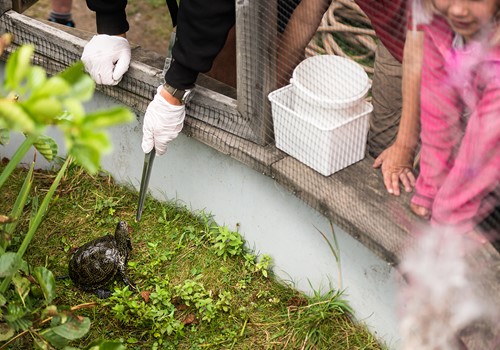
The effect of zoo animal encounters
Which effects do animal encounters have? Indeed, it can create emotions in humans, but does it help us to learn better and get us more committed to conserving endangered species? This will be studied in a new research project at SLU, the Swedish University of Agricultural Sciences, which will run for the coming 8 years. Nordens Ark will participate in the study and we think it is important that issues like these are studied and highlighted.
Do you want to know more about the study? Click below.
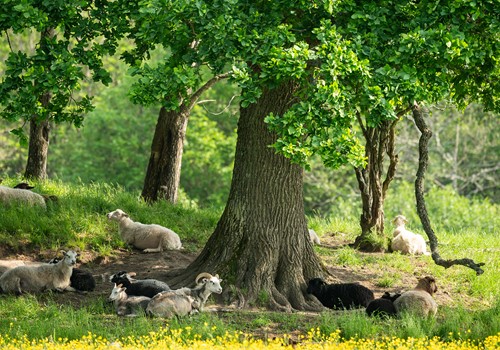
The impact of large herbivores on the landscape
Even though the doctoral project which has been going on for seven years ended at the end of 2023, the research on how larges grazers affect the landscape in the Ecopark continues.
Do you want to read more about research and other activities in the Ecopark? Click below.
The Ecopark project
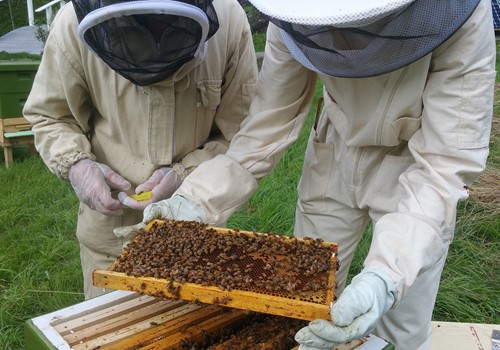
Honeybee ecology
During the project ”Supporting Nordic Brown Bees”, a lot of data was collected.This data is now being processed, even though the project itself is finished. Among other things, we have collected pollen samples from our bees that are now analysed.
Do you want to know more about how we work with the Nordic bees? Click below.
Nordic brown bee
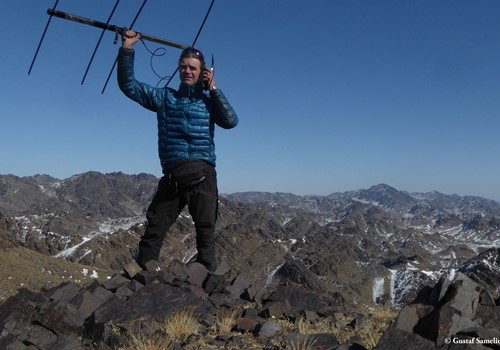
Snow leopard ecology and distribution
For 14 years, Nordens Ark has been supporting research on the ecology and distribution of the snow leopard in the Gobi desert in Mongolia. By using camera traps and GPS collars, the researchers can follow the snow leopards in the area to learn more about their habits and abundance.
Do you want to know more about our work with the snow leoapard? Click below.
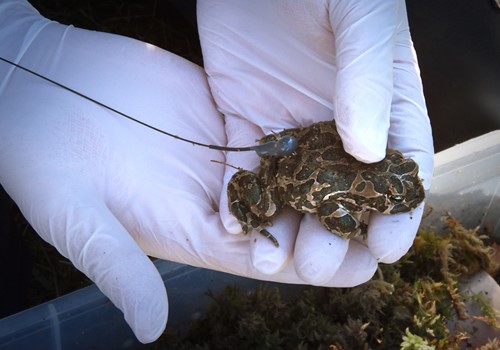
Dispersal and welfare in released green toads
To ensure the survival and welfare of the green toads that we annually release on Öland, we provide some of the released toads with small radio transmitters. This gives us the opportunity to follow them after release and thereby get a better idea of how they are doing and how they disperse in the area. This knowledge is important in the evaluation of the release method.
Do yu want to know more about our work with the green toad? Click below.
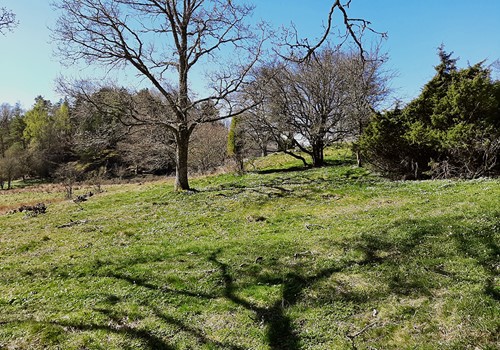
Veteranisation as a nature conservation method
Veteranisation is method to create characteristics that are only found in older trees, in younger trees. Old trees are important for a number of different species, such as lichens, fungi and insects, but today there are verry few old trees in the landscape. By trying to mimic natural processes that damage the trees, such as lightning, storms and fires, you can start the aging of the trees and thus create some of the unique habitats that can only be found in really old trees. In our Ekopark, we have a number of trees that have been veteranised. They are part of a project that studies how different methods of veteranisation affect the aging process in trees.
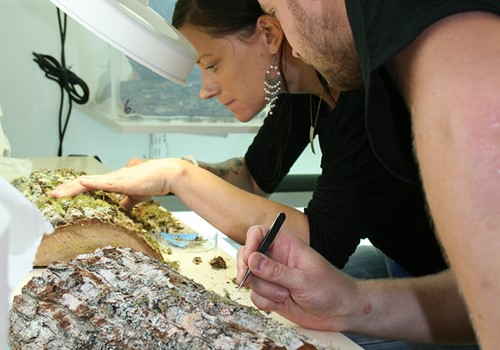
Pheromones in insect conservation
Many insects communicate by using pheromones, which is a type of scent particles. Exactly how these work and whether you can use them for nature conservation purposes is not entirely certain. That is why we participate in studies where, among other things, pheromones are collected from our insects, which can then be studied in more detail.
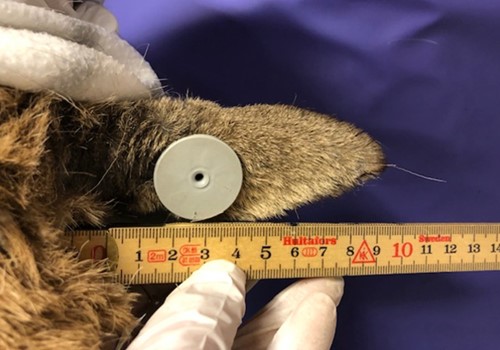
Contributions to external research
In many cases, Nordens Ark contribute with material or data to external research projects. For example, we collect blood samples and DNA in the form of fur or faeces, which we can send to researchers worldwide. We are of course happy to participate whenever we can contribute to conservation science.


